#foliose lichens
Explore tagged Tumblr posts
Text

Xanthoria parietina
Carnaxide/Portugal (19/02/2025)
[Nikon D7100; AF 105mm Micro-Nikkor F2,8]
21 notes
·
View notes
Text

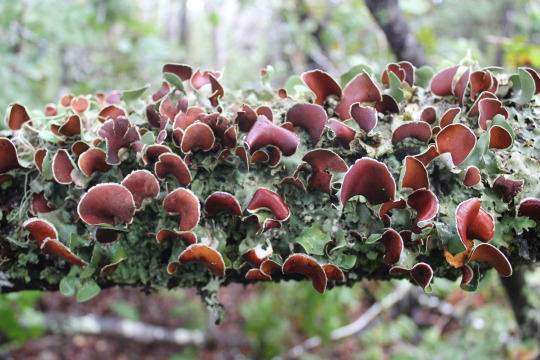


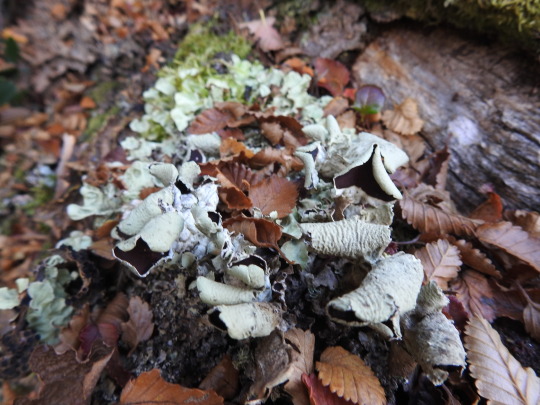

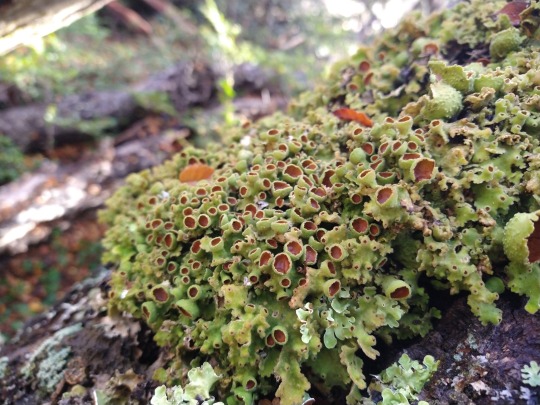
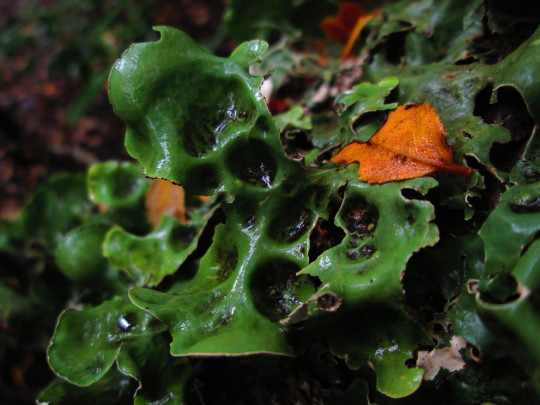
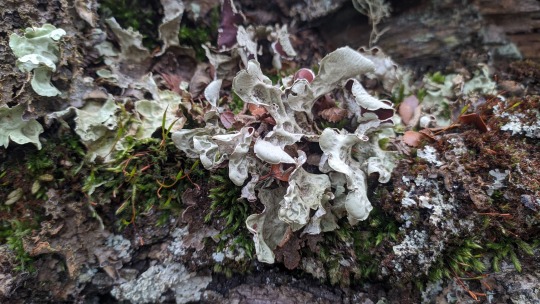
Nephroma antarcticum
images: source | source
#lichen#lichens#lichenology#lichenologist#mycology#ecology#biology#fungi#fungus#symbiosis#symbiotic organisms#algae#I'm lichen it#lichen a day#daily lichen post#lichen subscribe#trypo#trypophobia#Nephroma antarcticum#Nephroma#foliose lichen#life science#environmental science#natural science#the natural world#beautiful nature#weird nature
1K notes
·
View notes
Text
can you imagine living on a coastline and the lichens are going crazy and you’re just like damn another day on the coastline with whatever that is I guess. millions of such cases as we speak
#i think moving to a place with lush fruiticose and foliose lichens would cure me#graph of all the antidepressants and their effectiveness but big lichens on top 80% effective clinically unprecedented#lichens
921 notes
·
View notes
Text

I forgot to post this because I finished it at like 12 and then I was too busy looking at what cool lichens I could add to her and then I ended up far down a Wikipedia rabbit hole at 2 am.
Anyways lichens are literally so cool because they are like THE symbiotic relationship. Like the 2 components most lichens have (Algae and fungi) are so intertwined that they are considered their OWN SPECIES?!?! THEIR OWN FAMILY?!?! Like when most people refer to symbiosis they refer to things like clown fish and anemones, which is a good example but both can survive somewhat without each other. But the algae and fungi that make up lichens are SO intertwined that they can be considered species of their own and are often ONLY seen with each other! That’s like if clown fish and anemones became so reliant on each other that they merged and became their own species. THAT IS SO AWESOME PEOPLE NEED TO TALK ABOUT THIS MORE PLEASE IVE BEEN HOLDING THIS INFORMATION IN FOR SO LONG AND NOBOY CARES WHEN I EXPLAIN HOW COOL THIS IS.
Ok deep breath guys sorry you had to deal with that infodump but if anyone ever asks me about plants/fungi/algae I will never shut up they are my special interests and I will never get tired of them.
Anyways I added some Foliose lichen to sequoia’s back instead adding those web thingys. I also tried to add some flavoparmelia caperata on the knot near the end of her wing since it’s one of my favorite kinds of lichen. I also added some of this one type of mushroom that usually appears on older trees but I forget its name.

Hehe haha anyways I’m totally normal about plants you guys should ask me about plants because I am sooo normal about them it’s crazy.
#wof#wings of fire#wof art#watercolor#leafwing#queen sequoia#sequoia wof#sequoia#lichen#moss#mushrooms#foliose lichen#hehe sorry#info dump#special interest#plants
33 notes
·
View notes
Text
girl help people on iNat are calling anything grey and lumpy Physcia stellaris again
#even if it's not remotely foliose#lichen#lichens#lichenology#inaturalist#girl help my post is incomprehensible
26 notes
·
View notes
Text
Thought people might want to see these specimens growing on my fence:
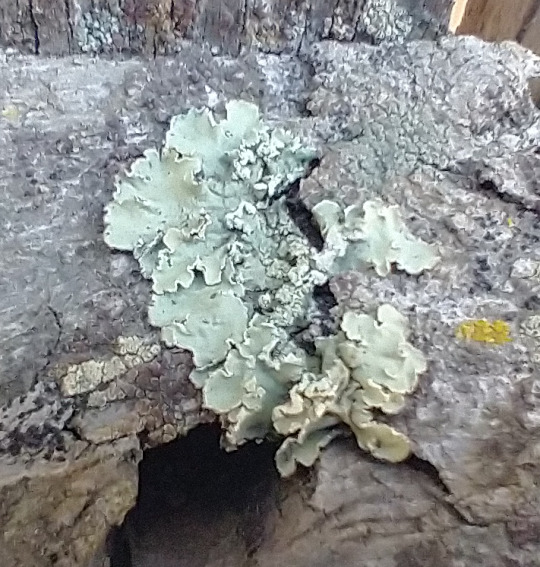
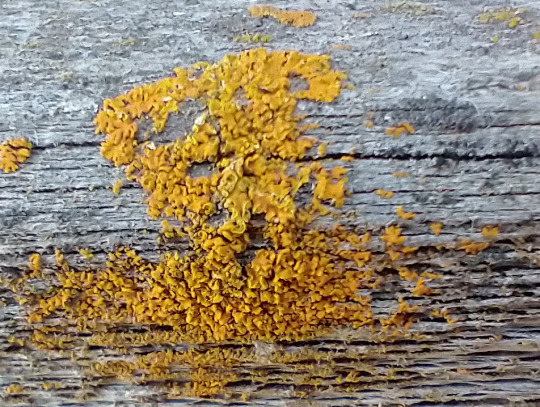

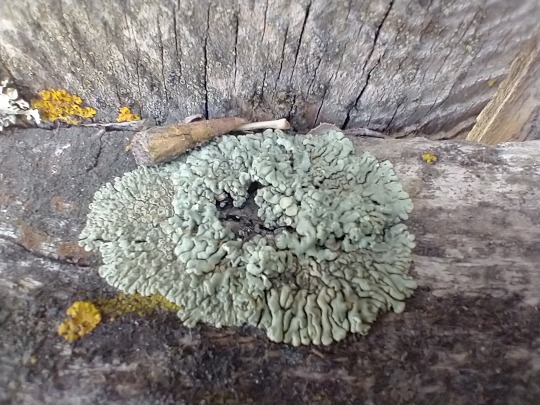
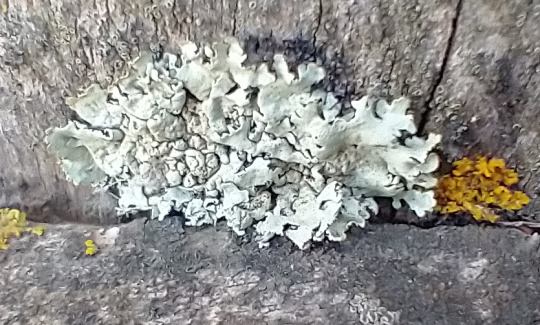
#mycology#lichen#wild fungi#foliose lichen#Visible podatia? I think?#Crustose lichen#If anybody would be interested in trying to identify these be my guest
0 notes
Note
could i request some foliose lichen? (if possible, just the lichen without the bark or anything but if not thats fine)
Thank you!


107 notes
·
View notes
Text
The Special Words for the Growth Forms of Lichen
The special words for forms of lichen are almost as good as the special words for the textures of ants. The Foliose, The Crustose and The fruticose. Areolate, Filamentous, Placodioid, Byssoid and Calicioid Who can forget Cladoniform and the Squamulose!
And must we mention the Gelatinous and Leprose?
163 notes
·
View notes
Text
FIRST LICHEN OF MY BIOLOGY SEMESTER SPOTTED!!!!!!!!
it was in a picture during the slide on Allele frequency in Peppered moths, which like. yeah. thats where it would show up. it was a foliose species which is always nice (theyre my favorite :P)
11 notes
·
View notes
Note
Ok so I’m a little bit obsessed with your blog already (as of discovering it 5 whole seconds ago) 😅
I do 3D scanning as part of my job, but with a structured light scanner. I’ve thought about scanning a foliose or fruticose but haven’t attempted yet - or seen anyone else try scanning lichen - until now. To get those results with photogrammetry really is good going!
Also the capsule lids on your sphagnum moss are insane! If you have any macro setup recs or tips you don’t mind sharing, I would love to hear them. I have a decent macro lens, but still trying to find the right lighting option for super close-up work.
Thankyou for the kind words. <3
Photogrammetry: I feel like lichens are not an easy fit for current photogrammetry tech, but flat photographs frustratingly limited for lichen identification - it would be *so good* to have examples that you can view in the round. So it's worth trying to make it work.
I really want to make 3d models of tiny things: liverworts and smaller lichens stand to gain the most in terms of accessibility from being shown in 3d.
Macro: taking things home instead of shooting in the field is new to me, but nearly all of my photos are still done with available light - either on a windowsill or in a side-room with a glass roof. My macro lens is 100mm which is long enough that the camera overshadowing the subject is not usually an issue.
This is the first year I've done much > 1:1 macro work. I'm not sure what happens in the winter - it will be too dark to do anything at all on some days, so maybe I will be looking at alternative lighting setups soon...
17 notes
·
View notes
Text
Moth of the Week
Peppered Moth
Biston betularia

The peppered moth is a part of the family geometridae. It was first described in 1758 by Charles Linnaeus. This moth gains its name from its speckled coloration, which has been studied as an example of natural selection and population evolution.
Description This species has a short body with narrow forewings. The body and wings are the same white base peppered with black dots and irregular black lines. This speckled pattern may vary with some moths having very few spots and others having so many that they look as if they are black with white spots as opposed to white with black. In rare cases, the black on the wings and body is replaced with gray or brown and in even rarer cases the spots are a combination of brown and black/gray. These spots help the moth camouflage against lichen on trees.
The evolution of this moth had been studied extensively during the last two hundred years, which created the term “industrial melanism.” During the Industrial Revolution, air pollution killed off lichen and covered trees in soot. This caused moths with a black spots on white base (typica) coloration to lose their camouflage and die off due to predators. This caused a spike in population for moths with a darker coloration (carbonaria) because they had the camouflage advantage. Once environmental conditions improved, the lighter colored moths once again became the dominant coloration.
The male’s antennae are bipectinate, meaning it has two rows of rami going down either side of a singular flagellum.
Wingspan Range: 45 - 62 mm (≈1.77 - 2.44 in)
Diet and Habitat The caterpillar of this moth eats many trees, shrubs, and small plants such as Blackthorn (Prunus spinosa), Hawthorn (Crataegus monogyna), Downy (Betula pubescens) and Silver Birch (Betula pendula), limes, sallows, poplars, oaks, Sweet Chestnut (Castanae sativa), Beech (Fagus sylvatica), Bramble (Rubus fruiticosus), Broom (Cytisus scoparius), Black Currant (Ribes nigrum) and Hop (Humulus lupulus).
They have a wide range, being found in China (Heilongjiang, Jilin, Inner Mongolia, Beijing, Hebei, Shanxi, Shandong, Henan, Shaanxi, Ningxia, Gansu, Qinghai, Xinjiang, Fujian, Sichuan, Yunnan, Tibet), Russia, Mongolia, Japan, North Korea, South Korea, Nepal, Kazakhstan, Kyrgyzstan, Turkmenistan, Georgia, Azerbaijan, Armenia, Europe and North America. They prefer habitats of woodland, scrub, hedgerows, parks and gardens.
Mating Depending on its location, this moth can have one or two generations per year. In Great Britain and Ireland, the peppered moth has one generation per year, whilst in south-eastern North America it has two generations per year. They emerge from the pupea in late May to August.
The females attract males with pheromones, which are carried by the wind. Males follow the concentration gradient to find the female. The male guards the female from other males until she lays the eggs. The female lays about 2,000 pale-green ovoid eggs about 1 mm in length into crevices in bark with her ovipositor.
Predators This species is a night-flying moth, making the vulnerable to bats. The males in particular fly every night to search for a female while females fly only the first night.
To protect themselves from birds during the day, this species rests on lichen covered trees to camouflage themselves.
The day time resting positions of this moth have been recorded and studied. This study shows that the peppered moth prefers resting spots that are covered such as below where the trunk and a branch meet, the underside of branches, and leafy twigs.
Additionally, the study found peppered moths with a lighter coloration (typica) blend in better against crustose lichens rather than foliose lichens because birds can see ultraviolet light. The peppered moth reflects UV light while crustose lichens don’t, making them easier to pick out.
Fun Fact The caterpillars of the peppered moth resemble things in both color and size. An experiment published in 2019 done on the caterpillars of the peppered moth showed that the larva (even when blindfolded) could sense the color of the tree they live on and change their body color to match and/or would move to a different twig that was closest in color to their own body.
(Source: Wikipedia, Butterfly Conservation, Max Planck Institute)
#Biston betularia#libraryofmoths#animals#bugs#facts#insects#moth#lepidoptera#mothoftheweek#Geometridae#peppered moth
91 notes
·
View notes
Text

Foliose lichens - Líquenes foliáceos
Sintra/Portugal (28/11/2024)
[Nikon D850; ∑150mm F2.8 EX DG OS HSM APO Macro with Circular Flash Nissin MF 18]
21 notes
·
View notes
Text





Xanthoparmelia sublaevis
images: source | source
#lichen#lichens#lichenology#lichenologist#mycology#ecology#biology#fungi#fungus#nature#symbiosis#symbiotic organisms#algae#Xanthoparmelia sublaevis#Xanthoparmelia#trypo#tw: trypophobia#I'm lichen it#lichen a day#daily lichen post#lichen subscribe#foliose lichen
123 notes
·
View notes
Text
tempted to make a lichen growth form tier list but in truth i appreciate all of them in their own ways.... fruiticose is lavish and interesting and genuinely kinda insane to me but only because i come from a place where all the lichens are crustose.... foliose lichens are also kinda wild and in my experience are laden with soridia on the edges and also sometimes can come out branched or tube-shaped or hairy on the edges which is wild, also i think its funny that they end up growing on top of each other on dense logs and stuff....crustose lichens have a special place in my heart because i grew up with them and i love how they cover the bark of trees and some of them are so flat you can barely tell its a lichen (Graphis scripta certified classic lichen moment)...... squamulose is a bit of a deep cut lichen moment but one of my favorite lichen species is squamulose (Psora decipiens ❤️💞🫶 spoiler alert: small and pink no less)......etc. just thinking about them today tbh
368 notes
·
View notes
Text
Floral Fumo Fridays Valentine's Edition: Common Greenshield Lichen (Flavoparmelia caperata)
Yuuka still wandered about Mayohiga in search of more plants, but she grew tired and bored. To her, the shikigami minions were taking too long to solve the incident. She then planned once more to find and wake up the sleeping sage. Wandering away from Mayohiga to a farther place on the borders of Gensokyo, she became lost.
Yuuka found a bunch of tree branches with strangely branchy and green disc-like creatures on it. The green and branchiness reads that maybe they are another plant, but a closer look and she finds that its more porous. Is it a plant? Is it a fungus? What is this?

With a blink of Yuuka's eyes, Ran appeared once more, "I see that there's no stopping a troublesome youkai like you." Yuuka feigned cluelessness, "I have no idea what you're talking about, I'm just admiring the beauty of nature. What are these strange things on these poor branches? Are they plants too?" Ran saw through Yuuka's smile, but could not help her beastly nature of playing along to Yuuka's whimsiness, "It's a lichen. They're actually a bunch of organisms in a symbiotic relationship between fungi and many microorganisms to form one organism. Some of the microorganisms could be very tiny plants, but Lady Yukari says that it's often disputed in the Outside World." Yuuka becomes more invested, "Interesting... Anyways, I'm now more interested in these lichens. Now I want to see what information Yukari has about plants!" "You will never get to Lady Yukari! You're too weak to even face her! You'll be lost in this boundary forever, at this rate!" Ran quickly disappeared without a trace. "Hmm... I guess something tells me I'm close." Yuuka questioned the fox.

Just as the fox elusively appeared, she disappeared without warning. But she accidentally dropped a chocolate candy wrapped in a golden glistening wrapper by the ground. Yuuka wondered what a beast would be doing with chocolate candy, as the delicacy is poisonous to animals and beasts. She tried to get closer to the chocolate, but a gap with a mysterious arm grabbed the candy before Yuuka's eyes!

Yuuka remembers those gaps from anywhere! It was the gaps of Yukari Yakumo! But she only grabbed Ran's candy and the gap quickly disappeared. So strange... ᗜ ̫ ᗜ

Lichens are a fungus in a symbiotic relationship with normally a eukaryotic algae or cyanobacteria. One side of the lichen is the fungal side called the mycobiont and the other is the photobiont. Mycobionts form most of the lichen body and we can see its predominant tissues through the naked eye, called the thallus. Photobionts can be any small microorganism with a chlorophyll and it's usually a green algae or cyanobacteria; something we normally can't see without special equipment. This is usually the basic definition of what lichens are, but the more we learn about lichens, we actually find that there are other species like yeasts and bacteria that part of this system. Lichens like Common Greenshield Lichen are a special kind of being, because they are actually a symbiotic system combined into its own organism! They are couples for life!
This is Common Greenshield Lichen (Flavoparmelia caperata) of the shield lichen Parmeliaceae family, which is a family of the mycobiont side of lichens. This lichen is found in numerous places throughout the world, and is predominantly found on wooded trees. The disc like shape is the thallus, and it can form a wrinkly shape that can grow a diameter of up to roughly 20cm. The innermost part of the thallus is more yellow, is an older part of the lichen, and is much more wrinkly than the outermost layers. This lichen with wrinkly and branch-like structures is called a foliose lichen. This thallus is the most noticeable, and is the vegetative part of the lichen. The photobiont performs photosynthesis at the algal layer below the thallus then sends nutrients to the rest of the body. The thallus can help the lichen clone itself, but this method isn't ideal.

A closer look at the whiter edges of the "branches" and you can find more powdery and porous-like structures. These are soredia and soralia. These help the lichen reproduce new lichens elsewhere through spores, but common greenshield lichen rarely grows structures like these. Instead, it relies on cloning (asexual reproduction) through the thallus to reproduce.
Lichens like common greenshield lichen are often overlooked (imo) as much as mosses are. Like mosses, they are not parasitic to the plant they grow on and simply live there as epiphytes.
The name of the lichen is always based on its mycobiont side. Flavo of flavoparmelia means "yellow" in latin and parmelia of flavoparmelia comes from its family name parmeliaceae and is the name of another genus in the family parmelia and ultimately comes from parma, which is latin for "shield." The species name caperata comes from capero which is latin for wrinkly. The name is pretty straightforward, but the mycobiont side has gone through many taxonomical changes and flavorparmelia caperata is a very recent name, so it may go under pseudoparmelia caperata in some older, but not too old, texts.
Lets talk about the photobiont side for a bit: While we cannot identify what the photobionts of this lichen are (and I would rather save them for another day as their own post), we can talk about it in a more general sense. Algae themselves are a broad range of organisms and some, like chlorophytes, are debatably considered plants in the stricter sense through their categorization into the Viridiplantae clade, while others are under the term Protist or Protista. Protista itself is comprised of any eukaryote that is neither an Animal, Plant, nor Fungi, but it's more of an umbrella term rather than a true kingdom. Cyanobacteria, or blue-green algae, are prokaryotes that enact photosynthesis as a means of obtaining energy. Chloroplasts and other plastids, which are an organelle found in eukaryotic algae and plants, actually used to belong to this phylum until they became endosymbiont as organelles.
Whaat? It's Valentine's Day and a Friday! This isn't a flower, not even a plant! It's a fungus... or actually... it's two things! Technically... The holiday this post is for is associated with flowers, but there are still no flowers that have formally grown yet here. I find that lichens are fitting either way.
Just in case for the first two links, here's an archival mirror link of them.
#valentine's day#fumo#fumofumo#kazami yuuka#yuuka kazami#touhou#touhou project#東方project#風見幽香#ふもふも#ぬいぐるみ#lichen#flavoparmelia carpata#ran yakumo#八雲藍#八雲紫#yukari yakumo#trypophobia#floral fumo fridays
8 notes
·
View notes
Text
Our Microbial Ecology professor is offering us extra credit if we can find three different kinds of lichen. My lab partners were unsure where to find lichens but the answer is simple, everywhere! The slightly more complicated answer is that they grow in the places that other plants and fungus can't grow, with rocks and tree bark being the most common. I was able to find all of these, in my own yard in about 10 minutes.
There was a colony like this one growing on the foundation of our house but I didn't want to disturb it so I was glad when I found this lovely specimen on a rock in our landscaping.

This was also on the same rock, it isn't a great picture but you can see the little rhizones that are used to attach themselves to the rock.
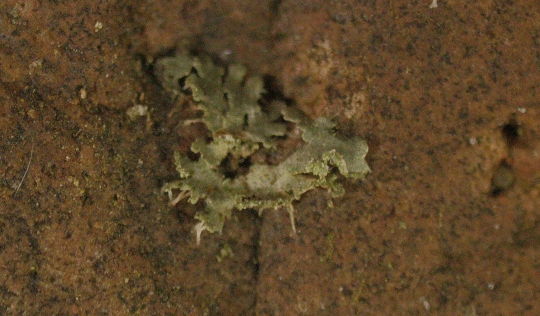
The reason lichens can grown on rocks and other inhospitable surfaces is because they are actually a symbiosis of two different organisms and there partnership is what makes it possible. Each lichen consists of mycobiont, a fungus, and a photobiont which is either an algae or a cyanobacteria. (a cyanobacteria is a kind of bacteria that can do photosynthesis.) The photobiont can produce energy through photosynthesis and the mycobiont can break down the substrate (yes, even rock) in order to get other nutrients that lichen needs to survive.
In fact here's another lichen I found on a rock in our landscaping. If you click on it to see the full sized image you can actually see the little grains of sand from the lichen breaking down the rock.
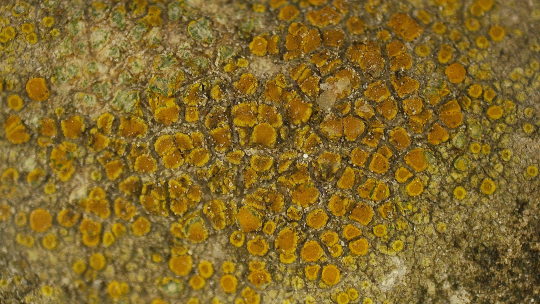
Keep in mind that this picture was taken at high magnification, to give you an idea of scale, here's the same lichen (or at least a very similar one) growing on a cement window sill at my kids school.
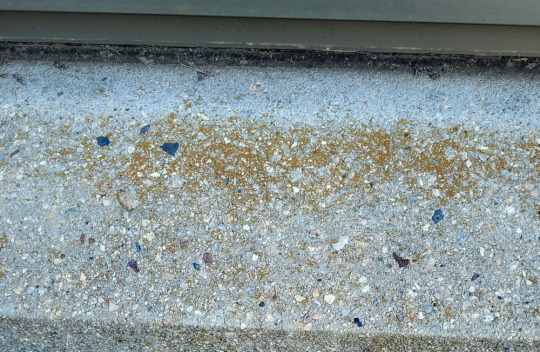
You can see how it might be overlooked as just some discoloration. If you've ever at an old cemetery, you'll see that a lot of the oldest headstones are pretty much completely yellow or orange, that's lichens.
This one was growing on a dead stick that had fallen off our apple tree. The round things are the apothecia, the reproductive structure of the fungal symbiont, that's why they often look like tiny mushrooms.

It can be very difficult to identify lichens to species because even lichens with different symbiotes can look very similar. If you were to disregard the apothecia, the one above looks a lot like the first lichen but the fact that they are on different substrates is evidence that they are different kinds. They aren't even the same growth form the first one is lobed and this one is foliose. I do own the keys to identify them, but I have yet to actually attempt to.
Lichen are also very particular about their habitat. The population on the apple tree (left) is very different from the population on the Cottonwood tree. (right)


Disclaimer: all of these lichens are very common in this area and were either on loose rocks in our landscaping, bark that was already peeling off the tree or on dead branches. You should never collect lichens if you aren't confidant that they are well populated and it's best not to damage their substrate to collect them
Disclaimer 2: I am not a lichen expert by any means, the information here is correct to the best of my knowledge.
If you're interested, I have turned some of these pictures into desktop backgrounds, they can be found here:
60 notes
·
View notes